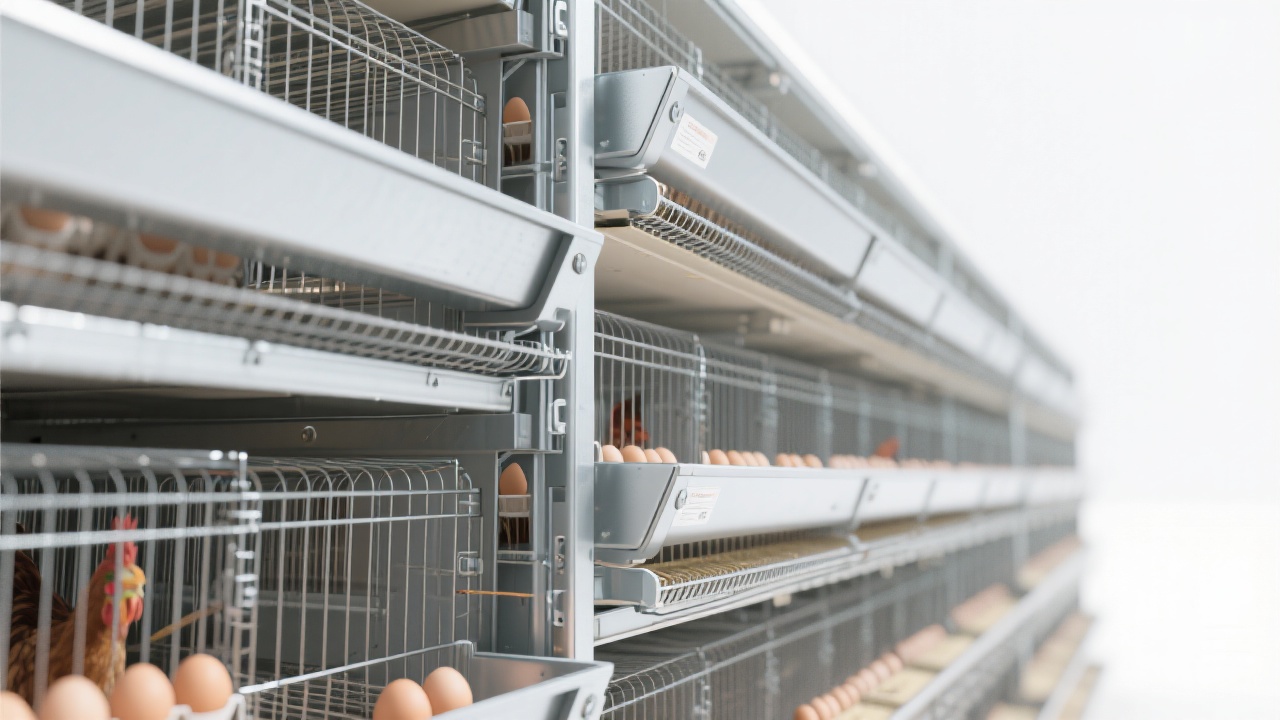
The longevity of layer cages is a pivotal factor directly impacting operational costs and production stability in poultry farming. This guide delves deep into how the commonly used Q235 steel performs as a base material and contrasts two leading corrosion protection methods—hot-dip galvanizing and aluminum-zinc alloy coatings—particularly under moist, challenging conditions. Understanding these technologies empowers producers to minimize maintenance expenses, reduce downtime, and enhance their equipment’s return on investment.
Q235 steel features robust mechanical properties with good weldability and high tensile strength, making it ideal for the structural demands of layer cages. Its carbon content strikes a balance allowing for durability while retaining cost efficiency. However, Q235 itself is susceptible to corrosion, especially in humid environments common to poultry houses, thus necessitating effective protective coatings.
Hot-dip galvanizing involves immersing Q235 steel components in molten zinc, creating a metallurgically bonded layer that is typically 60-85 microns thick. This zinc layer provides sacrificial corrosion protection, as zinc corrodes preferentially to steel, effectively shielding the substrate for up to 15 years depending on environmental factors.
The zinc coating also forms a barrier against moisture and oxygen, substantially delaying rust formation—even when scratched or damaged. Typical maintenance requires regular inspections to check for coating integrity, especially at welds and interfaces.
Aluminum-zinc alloy coatings combine approximately 55% aluminum, 43.5% zinc, and 1.5% silicon, applied via hot dipping but resulting in a thinner layer of roughly 20-30 microns. Despite thinner coverage, this composite coating offers superior corrosion resistance due to aluminum’s excellent barrier properties and zinc’s galvanic protection.
Its fine crystalline structure resists white rust formation and performs exceptionally well in humid, saline, or ammonia-rich poultry environments. The expected lifespan ranges from 15 to over 20 years with proper maintenance. However, because of the relatively thinner coating, mechanical damage requires prompt repair to maintain protection.
| Feature | Hot-Dip Galvanizing | Aluminum-Zinc Alloy Coating |
|---|---|---|
| Coating Thickness | 60-85 microns | 20-30 microns |
| Corrosion Resistance | Excellent, sacrificial protection | Superior barrier + galvanic effect |
| Expected Lifespan | Up to 15 years | 15-20+ years |
| Resistance to Mechanical Damage | Resilient; can self-heal at edges | Needs prompt repair on scratches |
| Performance in Humid Poultry Houses | Highly effective, but may develop white rust | Better white rust resistance |
Maintaining the integrity of the protective layer is crucial regardless of the chosen coating method. Recommended routines include:
Studies on layer cages in humid agricultural regions report that well-maintained hot-dip galvanized cages sustain their structural integrity beyond 12 years on average, while aluminum-zinc coated cages extend this performance to 18-22 years under similar conditions.
Implementing a systematic maintenance protocol can reduce unexpected equipment failures by over 30%, directly translating to more consistent production and lower capital replacement costs.
Ready to select the optimal corrosion protection system for your layer cages? Explore Our Advanced Anti-Corrosion Cage Coatings & Comprehensive Technical Support to maximize your operational uptime and durability in challenging environments.
Choosing between hot-dip galvanizing and aluminum-zinc alloy coatings depends on balancing upfront costs, anticipated environmental stressors, and desired service life. Hot-dip galvanizing provides thicker sacrificial protection and robust mechanical resilience, widely trusted for conventional applications. Alternatively, aluminum-zinc coatings offer advanced barrier properties ideal for prolonged exposure to aggressive wet environments, though requiring more vigilant maintenance after surface damage.
Incorporating a well-planned inspection and maintenance regimen can significantly enhance effective corrosion resistance for either method, safeguarding your poultry assets and supporting sustainable livestock production.

Data references are based on industry corrosion performance studies and field case analyses spanning over 10 years of poultry cage applications.

